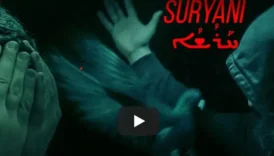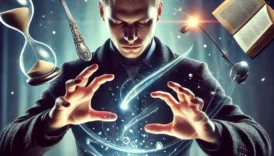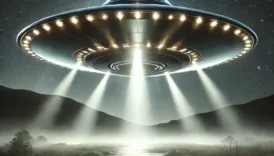Parallel Universes and Multiple Realities
Do the boundaries of the universe exist, or are we merely confined to the reality we perceive? Scientists, philosophers, and fiction writers have pondered these questions for centuries. Theories of parallel universes and multiple realities have not only been central to science fiction literature but have also become fundamental aspects of modern physics. But do parallel universes really exist? How do they form, and how do they interact with our reality? Here’s a detailed examination of different dimensions, quantum mechanics, and multiple universe theories.
- Parallel Universes and Multiple Realities
- 1. What Are Parallel Universes?
- a) Multiverse Theory
- b) Quantum Mechanics and Parallel Worlds
- 2. Theories of Parallel Universes
- a) Quantum Many-Worlds Interpretation
- b) String Theory and Extra Dimensions
- c) Cosmological Bubble Theory
- d) The Holographic Universe Theory
- 3. Is Interaction with Parallel Universes Possible?
- 4. Parallel Universes in Science Fiction
- 5. Parallel Universes from a Scientific and Philosophical Perspective
- 6. Future Research on Parallel Universes
- References
1. What Are Parallel Universes?
Parallel universes are alternative realities that either resemble our own or operate under entirely different laws of physics. These universes are a theoretical concept within physics and are explored through various scientific models. While definitive proof of their existence remains elusive, some physics theories strongly support the possibility of their existence.
a) Multiverse Theory
The multiverse theory posits that not just one universe exists, but an infinite number of universes. Some of these universes may be similar to ours, while others may operate under completely different physical laws.
b) Quantum Mechanics and Parallel Worlds
In quantum mechanics, the “Many-Worlds Interpretation” (MWI) suggests that every quantum measurement creates a new reality. That is, whenever an event occurs, separate universes emerge where every possible outcome has happened.
2. Theories of Parallel Universes
Several scientific disciplines offer theories to explain the existence of parallel universes. Some of the most notable include:
a) Quantum Many-Worlds Interpretation
Quantum physics states that a particle can exist in multiple states simultaneously. According to this theory, every choice we make or every quantum event results in the creation of a new parallel universe. For example, if you had made a different decision today, an alternate universe where you followed that decision could exist.
b) String Theory and Extra Dimensions
String theory suggests that our universe may have 10 or 11 dimensions. We experience only three spatial dimensions and one time dimension, but other dimensions may exist beyond our perception. These dimensions could be the foundation for parallel universes.
c) Cosmological Bubble Theory
This theory proposes that the Big Bang did not create just our universe, but multiple universes. These universes may operate under different physical laws and might not interact with ours.
d) The Holographic Universe Theory
The holographic universe model suggests that our universe may be a projection of a higher-dimensional reality. This theory implies that our perceived reality could be fundamentally different from what truly exists, possibly overlapping with other universes.
3. Is Interaction with Parallel Universes Possible?
If parallel universes exist, how can we interact with them? While scientists cannot yet provide a definitive answer, some speculative ideas have been proposed:
- Black Holes and Wormholes: Black holes and wormholes could serve as gateways to different universes.
- Consciousness and Quantum Mind: Some theorists argue that human consciousness might be connected to parallel universes.
- Experimental Physics: High-energy physics experiments, such as those conducted at CERN’s Large Hadron Collider, could offer insights into alternative universes.
4. Parallel Universes in Science Fiction
Parallel universes have been a recurring theme in science fiction literature and media. Famous works include Interstellar, Stranger Things, and Rick and Morty. Science fiction combines theoretical physics with imaginative storytelling, encouraging audiences to think deeply about these concepts.
Additionally, Philip K. Dick’s The Man in the High Castle explores the idea of parallel universes through an alternate history narrative. Writers like Isaac Asimov and Arthur C. Clarke have also explored multiverse ideas in their works.
5. Parallel Universes from a Scientific and Philosophical Perspective
Parallel universes are significant not only in physics but also in philosophy. The existence of multiple universes plays a crucial role in debates about determinism and free will. If every possibility occurs somewhere, what does that mean for our choices?
Philosophers also discuss the moral and existential implications of the multiverse theory. For instance, the question “Who am I?” becomes more complex when considering the possibility of different versions of ourselves existing in separate universes.
6. Future Research on Parallel Universes
Scientists continue developing new methods to find more concrete evidence of parallel universes. Future discoveries in quantum physics and cosmology may provide clearer insights into their existence. Organizations such as NASA and other space research institutions are investigating deeper layers of the universe in search of traces of other dimensions.
Parallel universes and multiple realities challenge the limits of human understanding. While there is no definitive proof yet, scientists and theoretical physicists continue exploring this enigmatic topic. Perhaps in the future, a groundbreaking discovery will allow us to interact with another universe directly.
References
- Everett, H. (1957). “Relative State Formulation of Quantum Mechanics.”
- Tegmark, M. (2003). “Parallel Universes.” Scientific American.
- Greene, B. (2011). The Hidden Reality: Parallel Universes and the Deep Laws of the Cosmos.
- Kaku, M. (2004). Parallel Worlds: A Journey Through Creation, Higher Dimensions, and the Future of the Cosmos.
- Deutsch, D. (1997). The Fabric of Reality.
Views: 9











